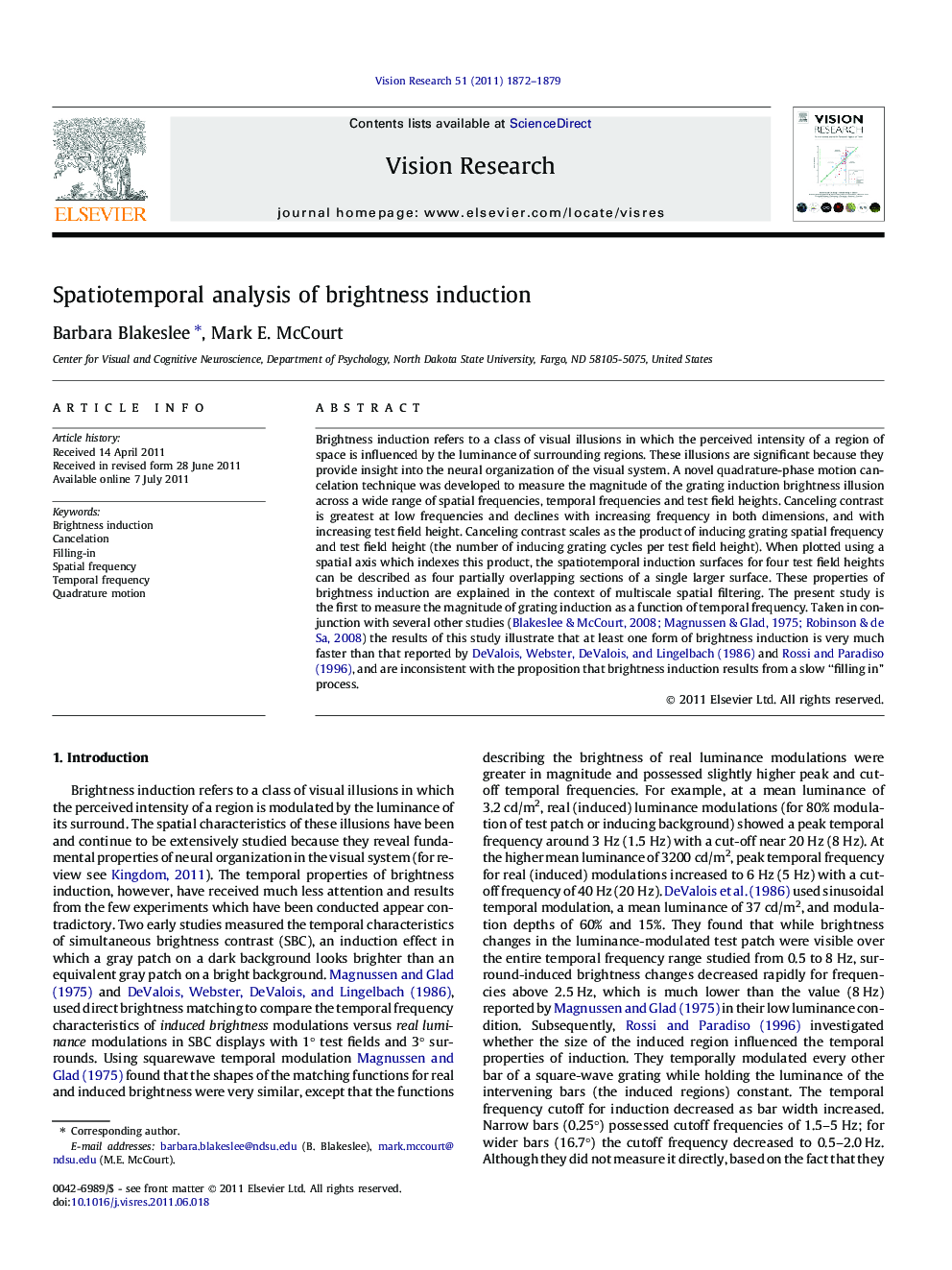| کد مقاله | کد نشریه | سال انتشار | مقاله انگلیسی | نسخه تمام متن |
|---|---|---|---|---|
| 4034104 | 1263427 | 2011 | 8 صفحه PDF | دانلود رایگان |

Brightness induction refers to a class of visual illusions in which the perceived intensity of a region of space is influenced by the luminance of surrounding regions. These illusions are significant because they provide insight into the neural organization of the visual system. A novel quadrature-phase motion cancelation technique was developed to measure the magnitude of the grating induction brightness illusion across a wide range of spatial frequencies, temporal frequencies and test field heights. Canceling contrast is greatest at low frequencies and declines with increasing frequency in both dimensions, and with increasing test field height. Canceling contrast scales as the product of inducing grating spatial frequency and test field height (the number of inducing grating cycles per test field height). When plotted using a spatial axis which indexes this product, the spatiotemporal induction surfaces for four test field heights can be described as four partially overlapping sections of a single larger surface. These properties of brightness induction are explained in the context of multiscale spatial filtering. The present study is the first to measure the magnitude of grating induction as a function of temporal frequency. Taken in conjunction with several other studies (Blakeslee and McCourt, 2008, Magnussen and Glad, 1975 and Robinson and de Sa, 2008) the results of this study illustrate that at least one form of brightness induction is very much faster than that reported by DeValois, Webster, DeValois, and Lingelbach (1986) and Rossi and Paradiso (1996), and are inconsistent with the proposition that brightness induction results from a slow “filling in” process.
► Brightness induction is a low pass function of spatial and temporal frequency.
► Brightness induction declines with increasing test field height.
► Brightness induction is faster than previously reported.
Journal: Vision Research - Volume 51, Issue 16, 15 August 2011, Pages 1872–1879